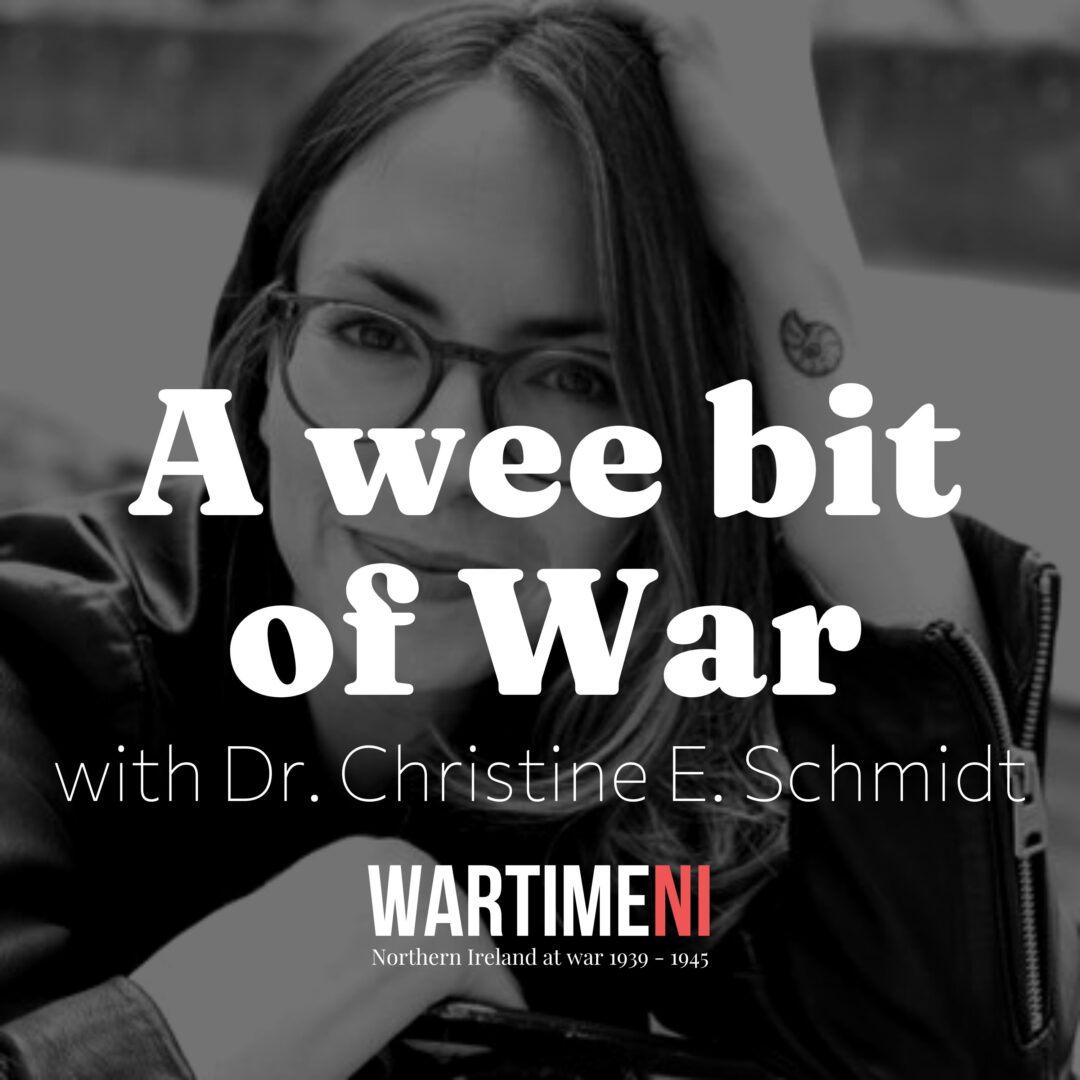
'A Wee Bit Of War' by Dr. Christine Schmidt / Scott Edgar
Released on 25th January 2023 by WartimeNI
Running Time: 27:44
- Holocaust
- Kindertransport
- Social History
Tracklisting
- Kindertransport and kindness in Ulster
To mark Holocaust Memorial Day 2023, we talked with Dr. Christine Schmidt of Wiener Holocaust Library in London about Kindertransport and the library's work.

'A Wee Bit Of War' by Dr. Christine Schmidt / Scott Edgar
Released on 25th January 2023 by WartimeNI
Running Time: 27:44
Tracklisting
By now, more people in Northern Ireland are aware of the Kindertransport and the resettlement farm at Millisle, Co. Down, and the vital role it played before, during, and after the Second World War. In the lead-up to Holocaust Memorial Day 2023, we talked to Dr. Christine Schmidt of the Wiener Holocaust Library about the role played by Northern Ireland at this time, the wealth of material in the Arolsen Archives, and the vital ongoing work of the library in the 21st century.
Hello, and welcome to A Wee Bit Of War, a podcast dedicated to telling stories of Northern Ireland during the Second World War. I'm your host, Scott Edgar, and in this episode, we're joined by Dr. Christine Schmidt to mark Holocaust Memorial Day 2023. Christine is a historian of the Holocaust with a passion for and a commitment to public history, archives and cultural heritage. She's also the Deputy Director and Head of Research at the Wiener Holocaust Library in London, and someone that I had the pleasure
Christine, welcome to the podcast, we’re delighted to finally have you join us. It’s a pleasure to get chatting to you again. I mentioned in my intro that we briefly worked together putting on an exhibition in Belfast as part of the Being Human Festival in 2021, and that was my first introduction to the amazing work done by the Wiener Holocaust Library. For any of our listeners who don’t yet know, can you tell us a little bit about you and the work you do?
Christine 1:00
Thanks, Scott, thanks for having me. It’s really good to be back even if we’re not back in person together, yet. I’ve worked for the Wiener Holocaust Library for about 10 years now, actually, next month, it’ll be 10 years. I’m a historian by training. I work as the Deputy Director and Head of Research. And I’ve always been sort of specifically focused on the Holocaust. And I’ve always taken an interest in public history and archives so it’s really a perfect place to work when you have those kinds of interests. I came to the library to set up access to our really particular archive called the International Tracing Service Archive, which you referred to in the introduction. This exhibition focused on we can talk about that in a minute, if you like. But the library is really a fascinating place to work, because it’s the oldest collection of Holocaust related materials; one of the oldest collections in the world and certainly the largest and oldest collection in the UK. We take our namesake after Alfred Wiener, who was a German Jewish scholar who, after returning from fighting in World War One, he noted with, with alarm, the rise in anti semitism in Germany and he began to campaign against the rise of Nazism by collecting and disseminating information, was very much an activist who tried to undermine their work through collecting information. But of course, this put him into a certain amount of danger as the Nazis came to power and he fled Germany in 1933, with his family, his wife and three daughters, and they settled in Amsterdam and then he set up what is the predecessor organisation to the library called the Jewish Central Information Office. And they also began to – he and colleagues began to collect and disseminate information in order to undermine… undermine the Nazism and their, their sympathisers. So after Kristallnacht in 1938, so this was the pogrom that was organised in November 1938 in Germany and Austria, Wiener began to prepare to move to the UK. And he arrived with this collection in 1939, just before the war began, but his wife and children unfortunately couldn’t get out and they remained behind in the Netherlands and ended up being deported to Westerbork Camp and Bergen Belsen and his family survived – his wife only barely. She ended up perishing from the ill treatment that she received in Bergen Belsen just after liberation. So, for Wiener, it was obviously a political, ideological impetus to collect, but also a very personal one. And we’ve essentially been collecting on materials on the Holocaust and other genocides since 1933. And this year, we’ll actually celebrate our 90th birthday. So we’re going to have a lot of events and opportunities to engage with our collections throughout the year. We hold approximately 70,000 books and pamphlets, about 2,000 physical document collections, 45,000 photographs, and about 3,000 periodical titles, a million press cuttings, as well as posters, objects and artworks and audio visual materials. But this also doesn’t include our digital materials – we were just chatting about digitization just a minute ago – some of which we only have in digital copy. And this particularly relates to the International Tracing Service archive, which we were talking about when we came to Belfast a few years ago.
Scott 4:35
So one thing I think that both of us find incredibly interesting is the real life stories that you often find in archives, and through the library and through chatting with you I, became aware of the Arolsen Archives or the International Tracing Service. For any of our listeners, who’d like to know more about these, how can they, how can they find out more and where can they explore these archives?
Christine 5:00
Yeah thanks, we, the Ar… the International Tracing Service archive, which is now known as the Arolsen Archives came together, it was actually, it’s actually one of the largest collections of Holocaust era documents anywhere in the world. It came together in the post war period, as the allies were opening up concentration camps and other sites of persecution, they began to collect the materials that they found, the documents that they found, lists of names, you know, sort of camp statistics, and things like that, and began to repurpose them for tracing, and then on top of that collection, was added materials about postwar emigration and care for displaced persons and post war refugees. So this collection essentially came to be centralised in what is now known as Bad Arolsen, Germany, it was known as Arolsen then, and it was the centre of tracing. So this archive was built on the idea of finding missing people. And nowadays, it’s been digitised so it’s completely in digital format, and it’s been accessible in particular locations around the world. In the UK, it’s accessible at the library in full. So in London, you can come and you can access the material. We have a team of researchers led by my colleague Elise Bath, who helps people find out more about their families or individual fates of people. It’s essentially, the collection contains 30 million documents relating to 17, over 17 million people. So it’s, it’s massive. And it’s really important, I think, to find people who can help you navigate the material and also interpret the material that you find. You can access some of the material online, on the Arolsen Archives website. They’re working exceptionally hard to put more material online, and we work alongside them to help people interpret interpret the mat… the material. What’s kind of interesting about it is that it, essentially, in many ways, gives, you know, the story of the Holocaust in the UK is, is a story of, in many ways, of refugees who came to the UK. But the ITS archive or the Arolsen Archives talks about people who were left behind essentially, or people who didn’t, weren’t able to leave continental Europe, as refugees and times and were persecuted and caught up in the Nazi camp system. So it it works well with other archives, it works well with other materials. And so it’s really, I think, important to have it accessible in places where you can combine it with other materials for your research, and we really do assist people with that. So you can contact us anytime and we’d be happy to help.
Scott 7:44
And you’ve mentioned briefly there about refugees coming to the UK. So this episode is going out during the week when we mark Holocaust Memorial Day. Even before the outbreak of the Second World War, Northern Ireland had begun to offer a place of refuge to young Jewish people fleeing occupied Europe. This is known as the Kindertransport. But how did that come about? How did that come about that places like Windermere in England and Millisle in Co. Down become these places of safety.
Christine 8:16
So I think yeah, I mean, the Kindertransport is probably the most well known scheme through which Jewish refugees or young Jewish refugees arrived in the UK, and it included the rescue of some 10,000 mainly Jewish child refugees from Nazi Germany, Austria, Czechoslovakia and Poland. The programme, the programme was put together after the essentially after the November pogrom, which I mentioned already, Kristallnacht, in November 1938, and it was mainly financed by Jewish communal organisations across the UK, debated in Parliament, where it was agreed that a limited number of child refugees could come as long as they didn’t become a financial burden on the state. So hence the private funding. So there were many relief organisations and Jewish agencies that took action in Europe to arrange for the transports. One of the most well known figures we often hear of is Sir Nicholas Winton, who worked for key organisers like Dorian Warner and Marie Smolka on the Czech side, who conceived of and organised the transport of unaccompanied children from Czechoslovakia. And, of course, the places on the transport were highly sought after. Children needed a guarantor in the UK to secure their pla… place. So needed to be 50 pounds. Parents were not permitted to travel with their children. So this was obviously a agonising decision for parents to separate from their children. The, uh, the historian towards work actually has this really great phrase that she talks about parents being the first rescuers of their own children. When we think about safe havens and the decision – that very desperate decision- to separate from your own children in order to hopefully ensure their safety. So, as you can imagine on the scene for children, this might have been the last time that many of them saw their parents. So it’s a rather ambiguous situation. There were many refugee aid organisations helping children and other refugees once they arrived in the UK, including the Belfast Refugee Aid Committee. And we also have some material in the library. We have a lot of material related to the Kindertransport in general. But the library itself was built by Jewish refugees to the UK. So you can imagine that the kind of shape of our collections relates to this refugee history very much.
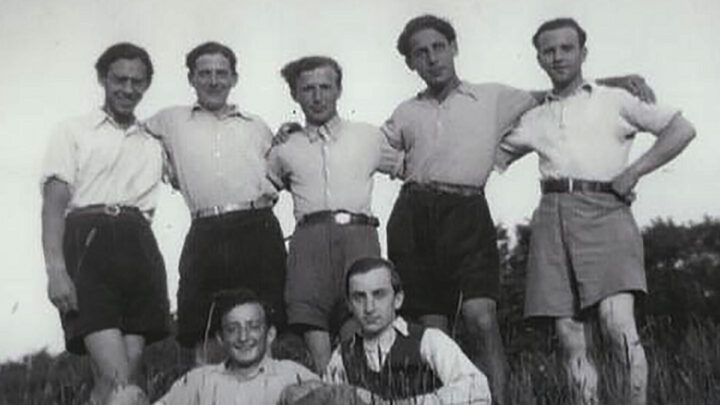
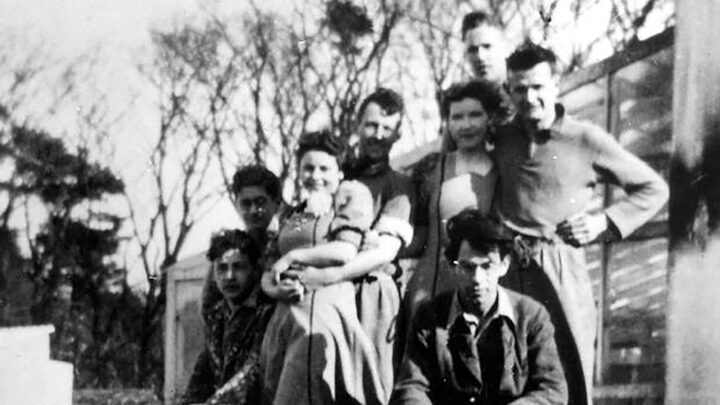
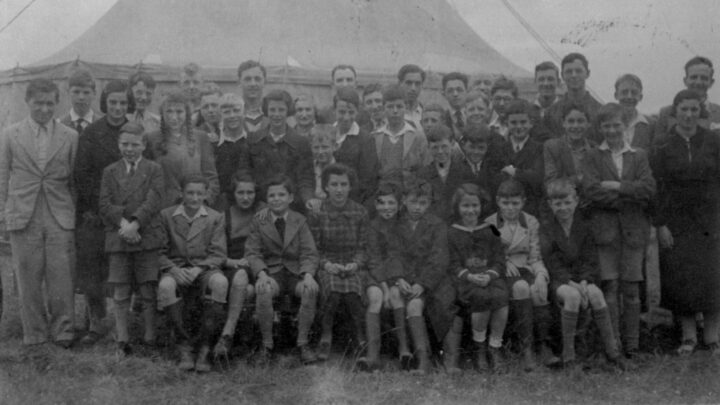
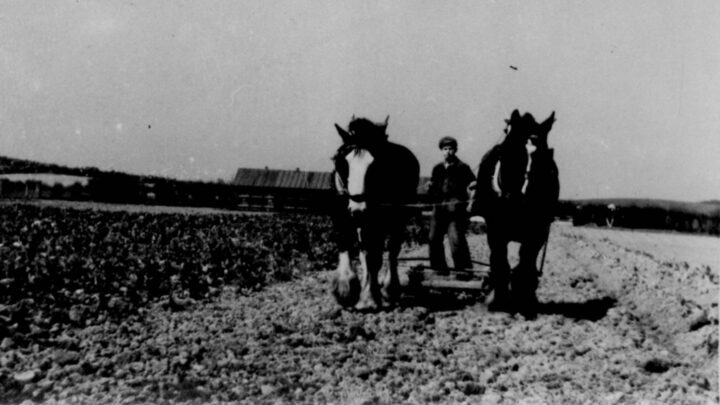
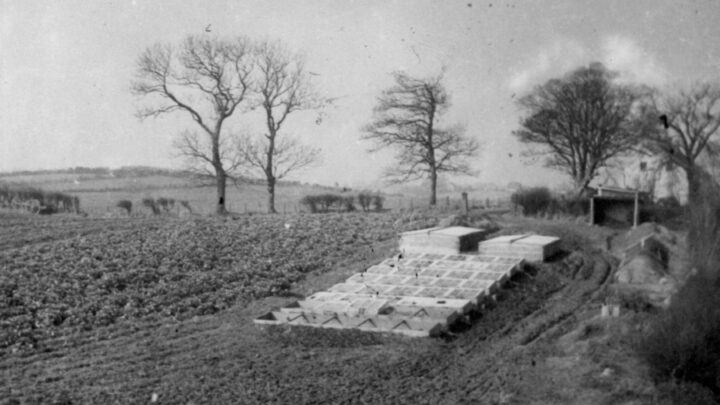
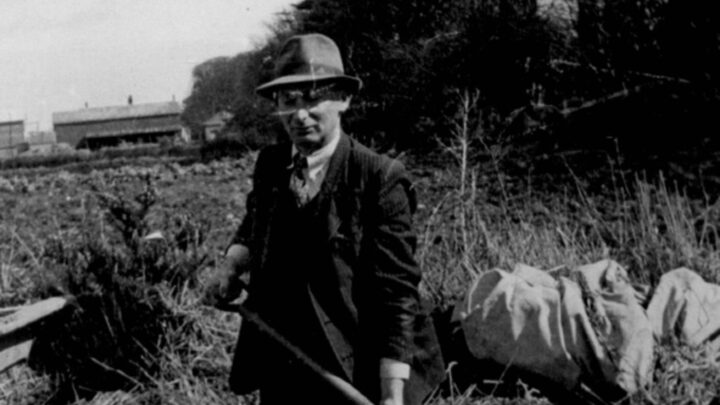
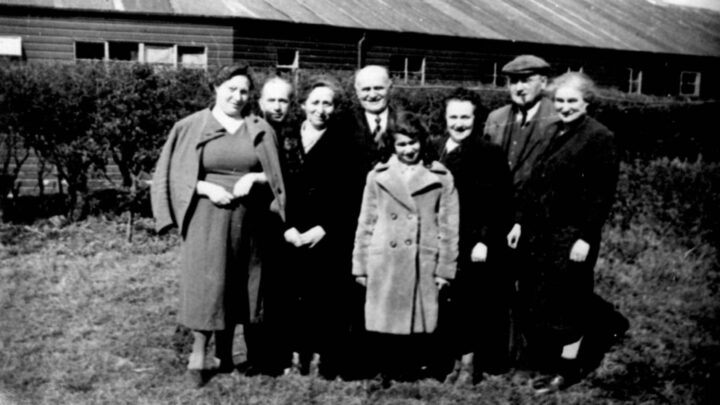
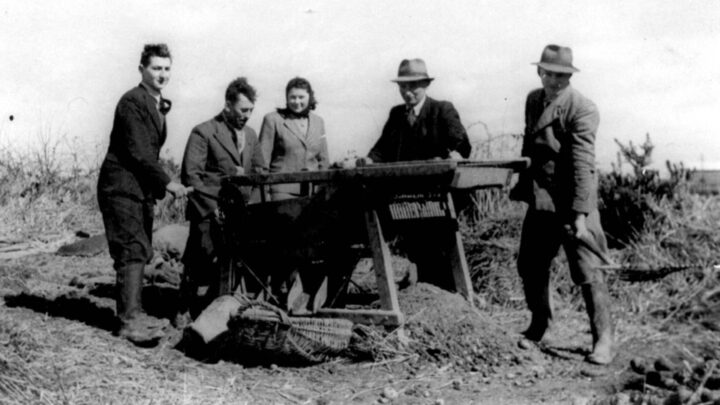
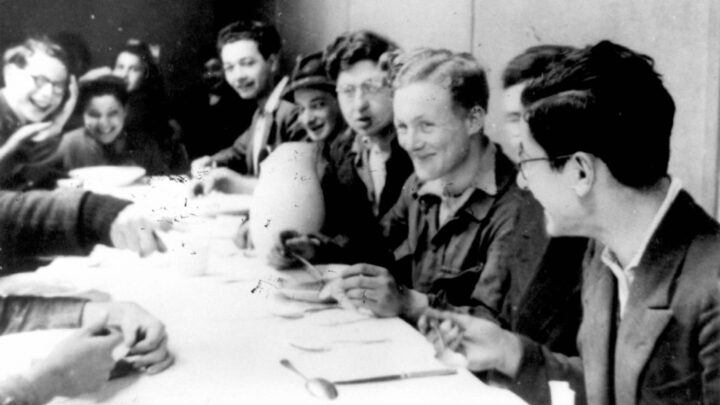
Scott 10:44
So of course, on this podcast, we focus primarily on the history of Northern Ireland during the Second World War. And going back to – you just mentioned the library and the Arolsen Archives there, what kind of materials might we find in there that would relate to Ulster during this period?
Christine 11:00
So the, as I mentioned, the library’s collection was essentially shaped by Jewish refugees to the UK. We also we do have material from people who came to Northern Ireland at some point during their flight. We have, for example, letters, a really interesting collection of letters from Elias and Gretel Dresner. to their children, Rolf and Helga, who had come on the Kindertransport in 1939. And of course, their parents remained behind. They had been in Scotland for time and then came to the Millisle Farm. Their parents were both murdered during the Holocaust, Elias was shot in Tarnów and Gretel was sent to the death camp and Belzec. The letters that they saved, and which we have in our collection, some 70 pages of these letters paint, paint, essentially the picture of the warm family life, it’s not a lot about the farm itself about their experiences, because obviously, we only have one side of the correspondence, but these letters from their parents indicate this kind of life that, that was destroyed, essentially. So it’s a really fascinating collection. We also have a lot of unpublished memoirs from former refugees and survivors. We have a short one by Oskar Runitski, who fled to Belfast at the age of 30, after he was kicked out of his legal studies and profession in Germany, due to his Jewish background. What’s interesting about him is his father had actually converted. He was, his father was a Protestant clergyman. But he was still persecuted as a Jew. So we have accounts from other former Kindertransportees who eventually were taken to the Millisle refugee settlement farm, for example, by Gerald Jayson, who was formerly Gert Jacobovitz, and he talks about his time specifically on the farm, which is quite a colourful account of what was like what life was like for him not being used to doing this kind of agricultural work. And some of this you can hear, we have a particularly interesting resource called our refugee map, which I can send you the link for if you if you’d like to include it with the podcast. We feature over 450 kind of excerpts from our family document collections and you can sort of see the people’s trajectories very easily, and it includes audio visual testimony from people like Gerald Jayson, so that might be kind of interesting for listeners. And then also we have a lot of Holocaust survivor refugee testimonies got that were gathered in the 1950s by the library – in the immediate post war period. This is a very early collection of written accounts. We have one or two examples of people who had spent time in Northern Ireland during their flight. I have a I have an excerpt here. I don’t know if you if we have a moment to read it. I can. It’s it’s pretty interesting. It’s from someone named Dr. S. Alexander. And he talks about his first day in Britain, in Belfast. And this was again, we the library received this in 1955 as part of this effort to collect survivor accounts in the post war period, and he says, We were quite news in Belfast, he’s talking about his arrival. And it seems as if the whole population had gone out of their way to make us happy. They were all there were all the time and for all refugees, arrangements for parties, concerts, motor trips, and even balls. I was invited from the Ulster Group Theatre to play small parts. I accepted happily and was happy was lucky to be in three productions. There were about 120 refugees living in Northern Ireland, mostly Austrians, about 24 lived in Dublin and I do not know whether it is known but the day after war broke out, the Irish government sent them over the border to Belfast where they of course were received with the same kindness and hospitality like the others. I stayed in Belfast until my internment in June 1940. So we have lots of material like this. And I think as I mentioned the ITS collection before, that there’s a whole scope for further research on experiences of people who came to Northern Ireland and Ireland, but also who again, left family behind because they couldn’t get out. We have, I think on your website, you show the list of names of children who were taken to, who are brought to the Millisle farm. So that was a list that was gathered in 1946 by the World Jewish Congress. You can find that in the ITS collection. But the ITS collection works really well if you use it alongside other collections. So I know at the Public Record Office in Northern Ireland, there is this collection of material that relates to the Ministry of Commerce, who were, that there was a scheme where Austrian Jews were applying to be able to set up businesses and to relocate to Northern Ireland, and some of them were successful, but in the main they weren’t. So the strength of the ITS Collection is using this alongside the names you can find in that collection at the Public Record Office. My colleague, Elise Bath has done an incredible amount of work researching some of the individuals who tried to apply to the scheme. There were some like someone named Gerhard Lemke who he was although he was denied a visa to Northern Ireland, he was able to flee to Shanghai and survived. But there were others like Georg Antoni Wortholz who were unable to escape Nazi persecution after they were denied, and were murdered in Auschwitz Birkenau. So it’s a again, it’s a it’s a mixed and difficult history to research. And again, the sites that we were talking about, they represent the safe haven, but there’s always this ambiguous and, you know, mixed kind of context to the reason why people were there. I hope that answers it a bit.
Scott 16:56
Yeah, that’s a fantastic answer. It was really great to hear that, kind of, firsthand written testimony. And there’s certainly a lot of information even in this short conversation of things that I wasn’t aware of. So yeah, we’ll definitely be doing more research together, going forward. Within Northern Ireland, there’s, there’s a little bit of knowledge about the resettlement farm at Millisle, there’s probably less knowledge about the Jewish community in Belfast, they’d a hostel up at Clifton Park Avenue. And personally, I think these are things that deserve much greater awareness. What kind of roles did these places play? And just how important were they, for these displaced people across Europe?
Christine 17:41
Yeah, I mean, as you said, after the war, there were a number of places in the UK that received Jewish child survivors or older survivors, and also refugees who came before the war. The, after the war, the government gave permission to about for about 1000 children to come over. And they eventually only found about 700. And places like Windermere, you mentioned earlier in the Lake District or the Millisle farm, served as care homes for recuperating children. And I think the sites as imperfect as they were, I understand the farmhouse in Millisle had to be adapted before it could receive so many people. They served, I think, as important sites where surviving children and young people were cared for, even if at the same time, I mean, this is both and history to refugee history, the persecution of parents, they may have left behind, and indeed, who may not have survived, weighed extremely heavily on their day to day experience as they were escaping Nazi persecution or surviving it. So there’s this mixed history involved in the refugee experience. And I think, for the UK, these sites have become an important part of the postwar legacy of Holocaust. If you look at the Association of Jewish Refugees has created this really wonderful map. And I know it links up to your website as well, Scott, this Holocaust UK map, and you can see how many sites like Millisle there were. And I think I’m not sure that people actually realise the extent to which these safe havens were created. So I think, you know, the, this in terms of Millisle, there was not only this farm where children were housed, but they also became integrated into the local community. So I think that’s an aspect that can be particularly interesting. I know there’s been commemorations at the local school, where they also attended, and it’s quite a remarkable story considering the manager of the farm had little experience in farming. And I think your piece shows how it became this fully fledged working farm and children became so well integrated into activities there and local community groups and some even stayed on. So I mentioned Gerald Jayson, he gave his testimony to the AJR, the Association of Jewish Refugees, and we include this on our refugee map, but he stayed on to study at Queen’s University Belfast, not everybody left either. So it’s quite interesting to think about the impact and the kind of longer term legacy of people coming to these regions. I think I guess I would sort of just reinforce that, you know, while it’s important to remember that these were sites of temporary refuge, and safe havens, the context of why Jewish refugees and other political refugees were there is also really important to remember. You pointed out, I was reading your article in preparation for this, Scott, and you pointed out this kind of lack of postal communication between the children and their parents in this kind of waiting, with no news, the turmoil and anxiety that was involved in sort of waiting to hear from parents or families. And if you read accounts from former refugees who spent time at sites like Millisle, it seems most had very positive memories of their experiences. But at the same time, this clearly weighed heavily on a day to day basis. And I think we can’t forget the circumstances which brought them there, which were quite painful and traumatic. So it’s a really interesting history of these, these sites. And I hope more people learn more about them as we uncover more research and connect the history of these sites to the wider history of the Holocaust.
Scott 21:30
Of course, Christine, there are many organisations doing great work in preserving these legacies that we’ve spoken about, preserving and telling the stories of those persecuted during the Nazi regime. What is next, specifically for the Wiener Holocaust Library?
Christine 21:50
So we like I said, we will have our anniversary our 90th anniversary year, this year. So we’ll be hosting a lot of different events and featuring new material on our website. We’re going through an extensive digital transformation project now where we’re trying to digitise more of our collections, we recognise that not everybody can come to London, it’s not always desirable, to travel all over to get access to materials. So we’re trying to make more of this accessible. One of the ways we do this, again, arguably, this is more for audiences in London, but we do have series of temporary exhibitions. But we also travel them as well as you, as you mentioned, we brought our one of our travelling exhibitions to to Belfast. And so our temporary, next temporary exhibitions will focus on Holocaust letters. That will open at the end of February, and we will hopefully have a lot of online content as well associated with that exhibition. So if you can’t attend in person, you can take part in our events. We have a quite a vibrant events programme, which you can find out on our, on our website. But we’re continuing, I mean, we’ve, we’ve been here for 90 years, we’ve been doing this for 90 years, so we’re just going to keep going. And we essentially, we continue our important work of collecting material. We sort of stand on the shoulders of those who came before us, and we continue to safeguard this material and try to make it accessible to as many people as possible who want to learn about past… about this important past.
Scott 23:22
And people do still want to learn about this past. And as we said this episode will go out just before Holocaust Memorial Day 2023. Why do you think it is vitally important that we still remember these events and mark a Memorial Day in the 21st century?
Christine 23:42
I think days like Holocaust Memorial Day are still really, really important for highlighting the significance of this history in the present. I think especially when commemoration means that people take additional steps to complicate their thinking about contemporary society and to look critically about, critically at the world around them. I also think it’s interesting to think about what local communities do to commemorate the Holocaust and genocide more generally, which in some ways might be more interesting than the kind of overarching theme or, you know, sort of bigger official ceremonies that we host. I think it’s really interesting, for example, I was looking at the commemoration at the school and the descendants of Maurice Solomon last year in Northern Ireland, I think, to find out what local communities are doing to uncover the local history of the Holocaust is really fascinating. So it’s very important. I would also say I think, I’m really appreciate, appreciative of being here on the podcast and talking about the library’s work. We’re always really grateful for any publicity we can, we can get to let people know that we’re here. And as I mentioned, this is our 90th anniversary year, so there’ll be a lot of material coming out as well. But we are here all year round. So, so if anyone wants to continue their learning or research after Holocaust Memorial Day, we’re very happy to open our collections and, and to assist and support people with their research, whether it’s about their own family histories, or about a kind of a larger research project. We’re here all year. So not only on Holocaust Memorial Day, but I’m really appreciative of being invited to come on the podcast. So thank you very much.
Scott 25:28
Christine, it is always great to chat to you. And we hope, we hope to, we will definitely work with you again soon. But until then, where can people find you and keep up with the great work that you do at the Wiener Holocaust library?
Christine 25:46
Thanks, Scott. So we’re at wienerholocaustlibrary.org, where you can find out everything about our events. A lot of these events are again, a virtual or hybrid. So even if you aren’t located in London, you can access them. We also have a number of digital resources, the testimony that I mentioned earlier, you can find out on our website as well, as well as our refugee map. So just go to wienerholocaustlibrary.org, and that is your kind of central hub for all this information about what we do.
Scott 26:17
Christine, thank you for joining us, and we hope to chat to you again soon.
Christine 26:23
Thanks a lot, Scott. It’s really been great to be here. Thank you.
Scott 26:27
If you would like to find out more about the Kindertransport in Northern Ireland, visit wartimeni.com/kindertransport. And if you’d like to hear from a Holocaust survivor, who came to the Millisle farm in 1946, be sure to listen back to episode two, where we chatted to Rachel Levy about her life before, during and after the Second World War. Subscribe to A Wee Bit Of War on Apple Podcasts, Google Podcasts or wherever you listen to your favourite shows. That way you’ll never miss an episode. Tell your friends. Tell your family. Tell your coworkers. Break all the rules of the Official Secrets Act. Why not leave a review to help others find the podcast? Thank you for joining myself and Dr. Christine Schmidt, and I look forward to your company again next time for another wee bit of war.
Discover the work of the Wiener Holocaust Library:
https://wienerholocaustlibrary.org
Explore the resources in the Arolsen Archives:
https://arolsen-archives.org/en/
Find out more information on the Refugee Map:
https://www.refugeemap.org/
Uncover Holocaust stories on the UK Holocaust Map:
https://www.ukholocaustmap.org.uk/
Read first-hand accounts from survivors:
https://testifyingtothetruth.co.uk/